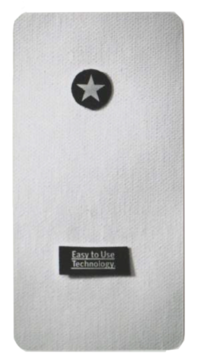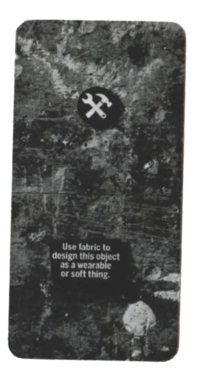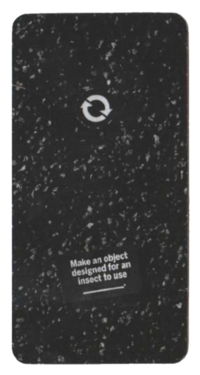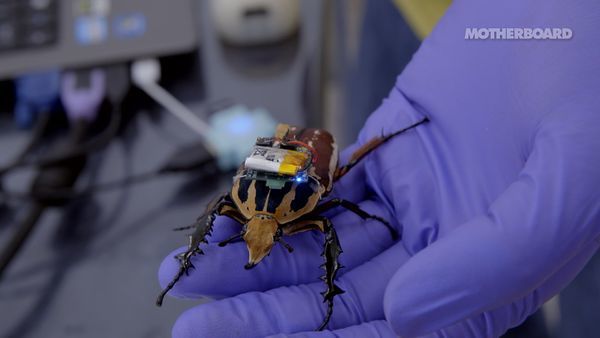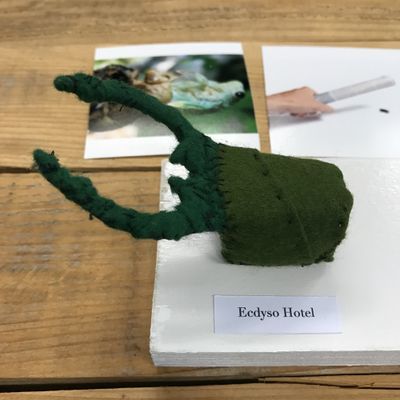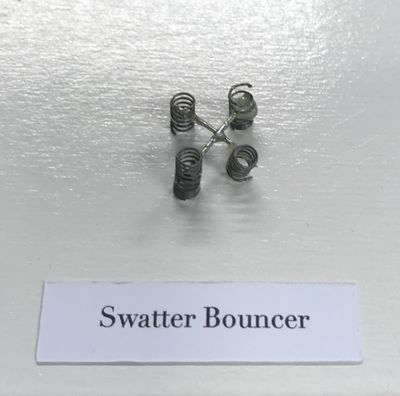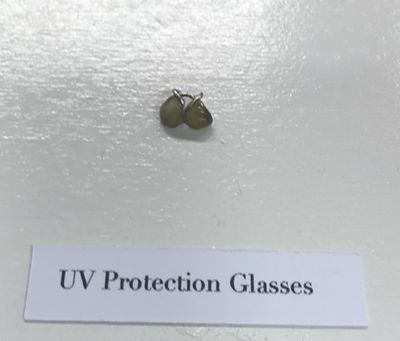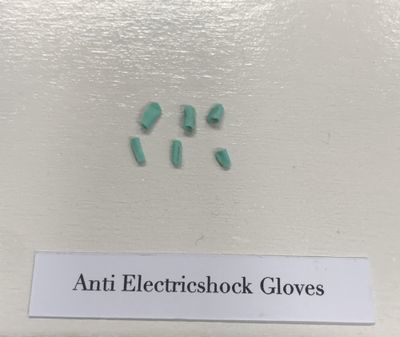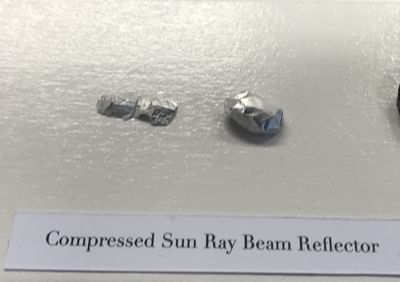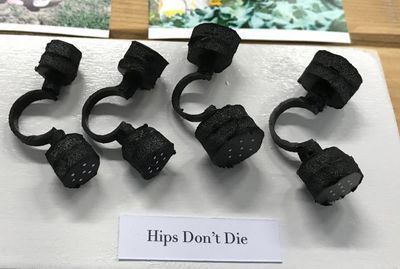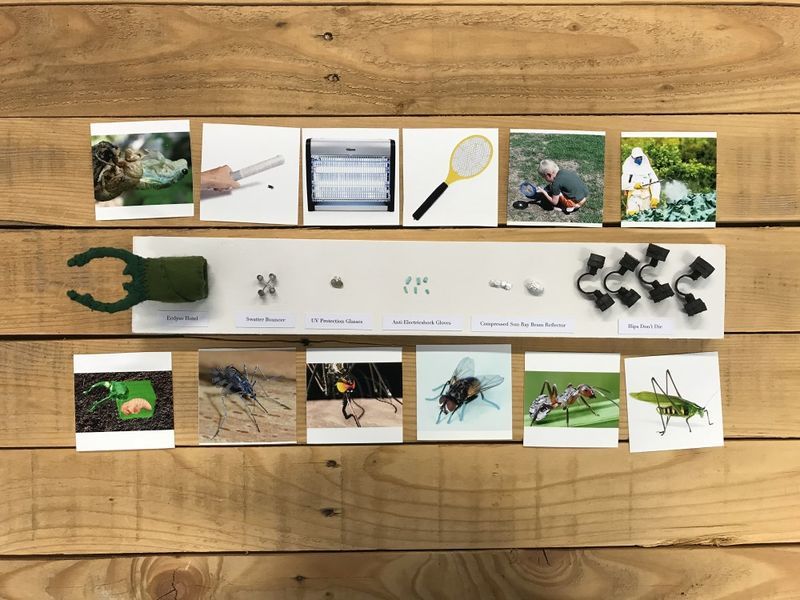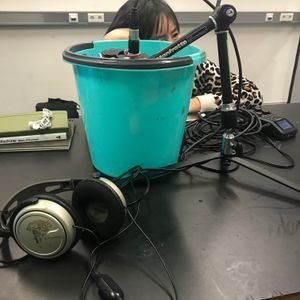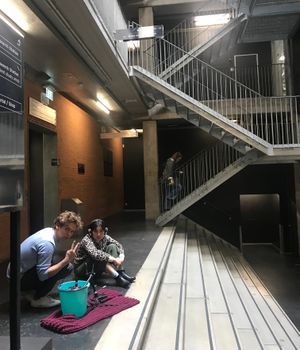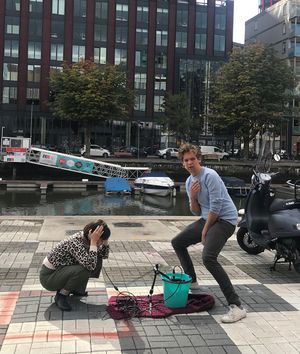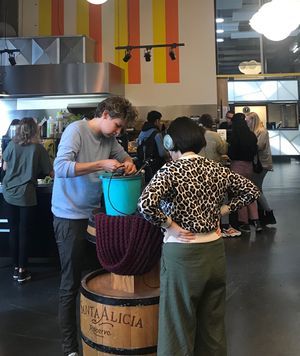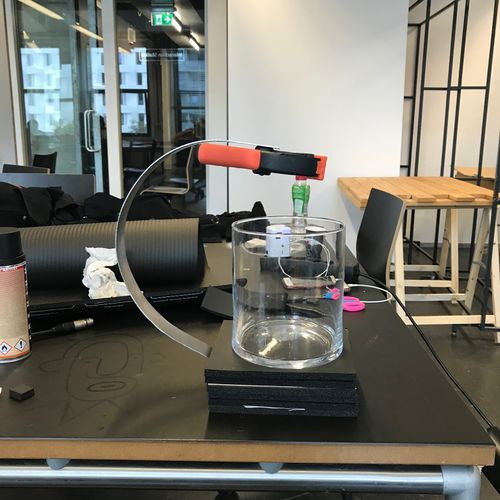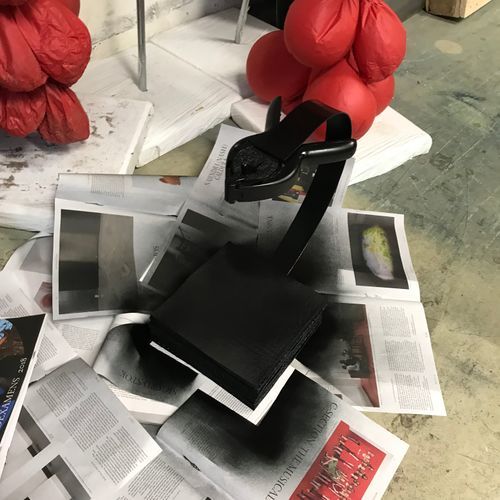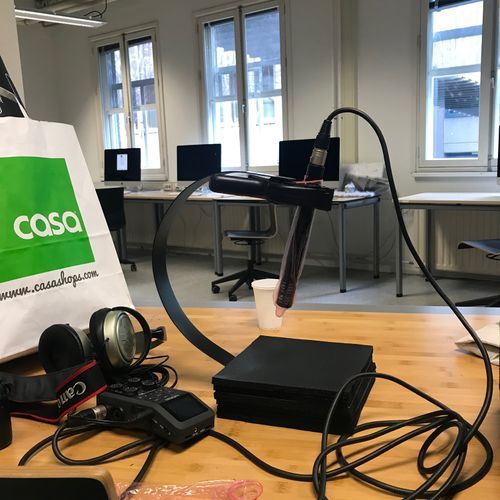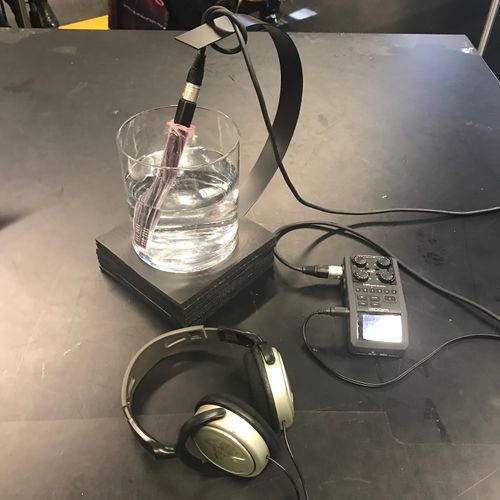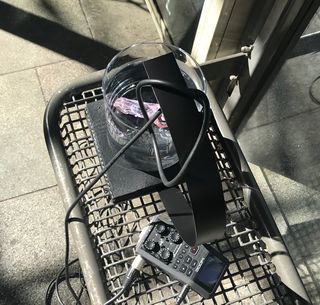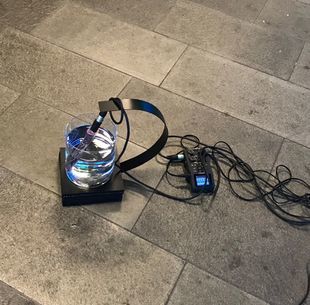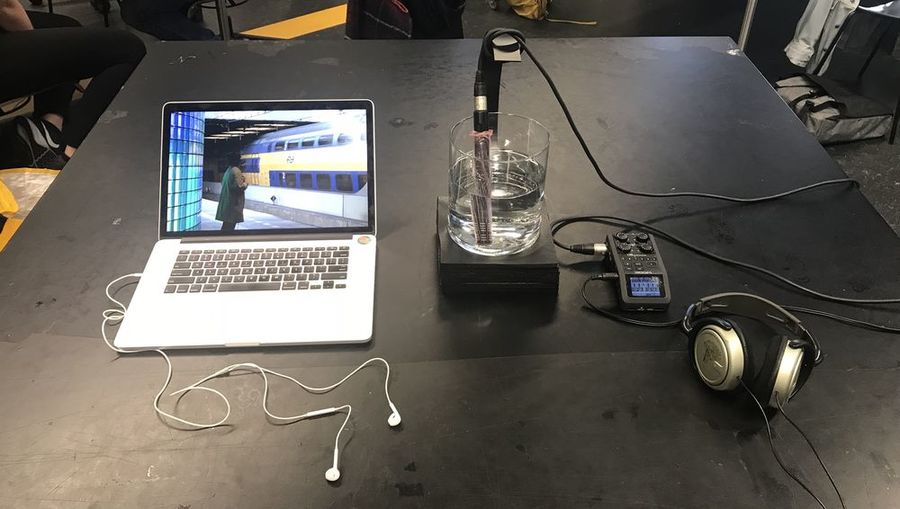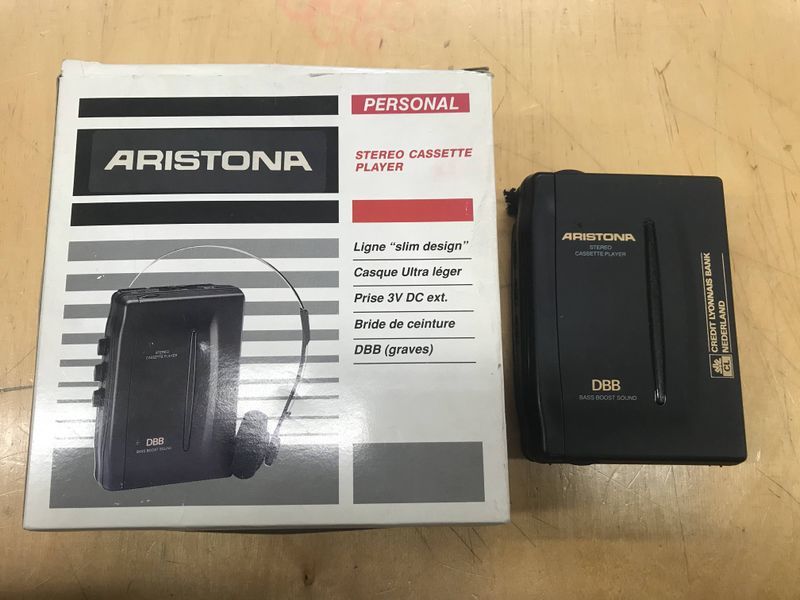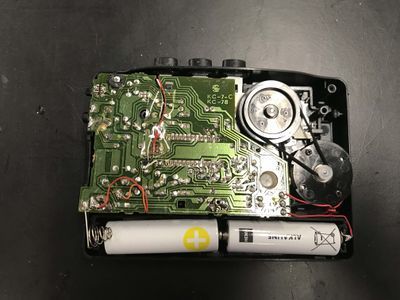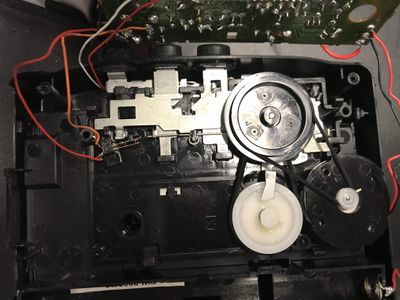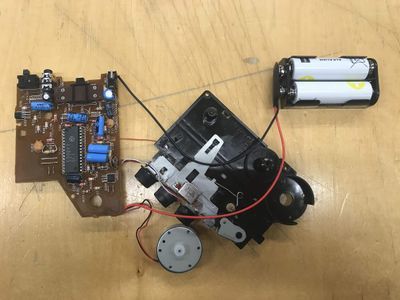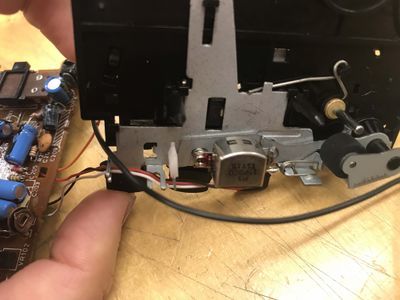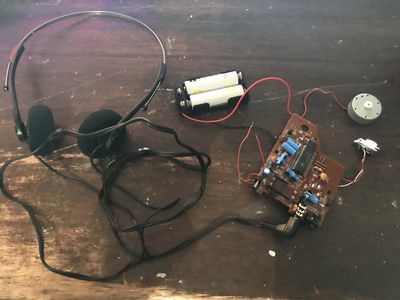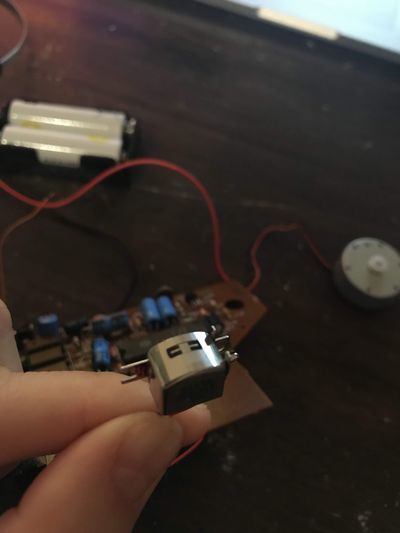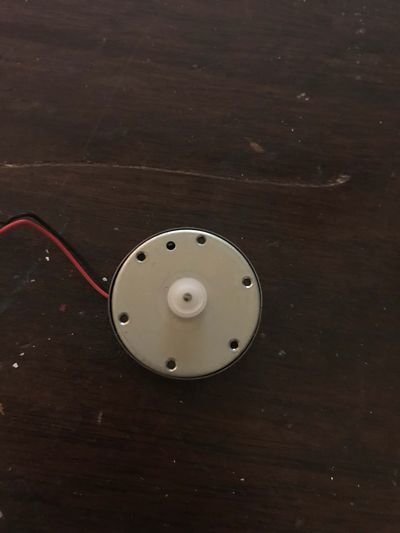Difference between revisions of "Digital Craft Minor 4th Year: Cybernetics"
| Line 29: | Line 29: | ||
=Project 2: Cybernetic Prosthetics= | =Project 2: Cybernetic Prosthetics= | ||
| − | + | ==Starting Point== | |
| + | Our first inspiration from nature, as a biomimicry was how whales communicate underwater. They communicate ultrasonic sound. | ||
===Research=== | ===Research=== | ||
| − | + | There were several interesting facts on how whales communicate and various examples how the ultrasonic can be used in real world. | |
| + | ===Insight from Research=== | ||
| + | However, we could not really drag one new idea we can work on derived from ultrasonic. We were watching some youtube video with whale sound and found that it is actually used for calming effect, and meditation usage. From this, we were thinking it would be nice to actually feel and hear as if we were under the sea. What if we make a device transform our surrounding to underwater by means of sound? | ||
| + | ==Plan== | ||
| + | We decided to use a hydrophone, a jar, and a recorder with which we can hear the input directly monitored to the headphone. However a hydrophone was too expensive, so we asked Rob in Image and Sound station and he recommended us to cover a regular microphone with a condom. | ||
===First Testing=== | ===First Testing=== | ||
Revision as of 22:31, 28 December 2018
Contents
- 1 Project 1: Critical Making exercise
- 2 Project 2: Cybernetic Prosthetics
- 3 Project 3: From Devices to systems
- 4 Project 4: Cartography of Complex Systems & the Anthropocene
- 5 Final Project (RESEARCH DOCUMENT)
Project 1: Critical Making exercise
Reimagine an existing technology or platform using the provided sets of cards. For this first project, I grouped up with Tutu, Thijs and Naima and we picked three random cards each from different category.
Inspiration
Our starting point
Prototype
Project 2: Cybernetic Prosthetics
Starting Point
Our first inspiration from nature, as a biomimicry was how whales communicate underwater. They communicate ultrasonic sound.
Research
There were several interesting facts on how whales communicate and various examples how the ultrasonic can be used in real world.
Insight from Research
However, we could not really drag one new idea we can work on derived from ultrasonic. We were watching some youtube video with whale sound and found that it is actually used for calming effect, and meditation usage. From this, we were thinking it would be nice to actually feel and hear as if we were under the sea. What if we make a device transform our surrounding to underwater by means of sound?
Plan
We decided to use a hydrophone, a jar, and a recorder with which we can hear the input directly monitored to the headphone. However a hydrophone was too expensive, so we asked Rob in Image and Sound station and he recommended us to cover a regular microphone with a condom.
First Testing
Making Prototype
Final Result
Aquatic Acoustic
Video Link : https://vimeo.com/292687674
Project 3: From Devices to systems
Cassette recorder to Electromagnetic noise detector
Project 4: Cartography of Complex Systems & the Anthropocene
Final Project (RESEARCH DOCUMENT)
Introduction
I take art as a mode of communication, which shows the exploration of my interests and thoughts. I try to capture how I am conscious with my surroundings and intrigue the audiences to question their own. I have been experimenting with different media, mainly photography, text, and sculpture, and came to the new media technology facing the fact that it is an inevitable yet fascinating medium. In spite of my fascination to technology, I could not develop my skillset in this field due to my broad interests. Therefore I chose Digital Craft as Minor to limit myself to actually work in certain context. I believe limitation gives you even more freedom and focusing on certain media and deepening is very important. As an artist, you should be able to utilise any media which is the most suitable to your work. The immersive effect of new media technology is very powerful. Since I become more aware of my recurring theme, I wanted to find the most effective way to express my contemplation. My work has been more of presenting art objects which derived from my own experience and has narratives behind. However, for me, art is not necessarily about delivering messages. It is more about providing a moment, event, environment by sending an invitation to people to meditate, be in the moment with the artwork. I found the connection between my works and the context of Digital Craft as immersion of new media and an interactive conversation of the audiences and their surroundings. Moving things and images, bright screens, LED lights, amplified sounds, new media brought us next level of immersion in our daily lives. However, such an effect made us to easily lose our concentration, mindfulness and need stronger stimulus. I wanted to make use of new media technology to provide audiences immersive effects and question the meaning of being conscious at the same time. Such as how important it is to be mindful in reality. I wanted to know what media technologies are out there nowadays and what kind of topics are being discussed at the moment. Besides, I also like the concept of combining digital and analogue, respecting the value of craftmanship. I appreciate physicality in art form, and working with spatial functionality enables me to create a zone with the artwork and give an immersive effect on audiences.
Research Question
Sound is the most immediate and immersive media to me. It is abstract yet very tangible and physical at the same time. We respond on in directly which I conceive as a bodily reaction. Therefore, my starting point of this project was 'sound' which developed into making use of sound for an interactive installation to make people conscious of their surroundings combined with other new media technologies. Sound has been my all time biggest interest. I have been always fascinated by weird noise and electronic music. Therefore I decided to research on digital audio processing and how to produce electronic music. Besides, I chose to do something has to do with audio for the former exercises to narrow down which aspects and elements of sound I want to further develop specifically. In exercise 2, as a group, we made a device to experience being underwater, using water as an analogue sound filter for surrounding. In exercise 3, I dissembled a tape player and transformed it into an electromagnetic noise detector using the tape head reads sound when it was close to magnetic. From exercise 2 and 3, I dragged my research topic as our perception to sound around us. I pointed the hypnotising and meditating effect of sound since it brings us to another state of mind. I also wanted to identify myself what is the border between sound art and music. Therefore, my research question became “How do we perceive sound around us? How does it affect us? How do we find it meaningful?”
Research Approach
(how do you define and design your research? what activities/approaches/methods will you pursue while conducting your research?) n terms of this class we will define practice-based research as an inherently critical approach to an investigation, and an investigation is formulated into the form of questions.
We define practice-based research as: 1. An inherently critical approach to an investigation; 2. An investigation which is formulated in the form of questions; 3. An investigation where the questions, analysis, and results (meaning entire process) have been made in open and transparent manner.
Artistic-based research often begins with finding a theme. Then a period collecting and assembly of relevant sources begins. However, the mere collection of content should not be called ‘research’! The critical analysis (leaving behind assumptions and prejudice) of textual and visual sources, interviews, experiments, exhibition and manifestations is where it actually begins.
If it is a very well conducted research, an outsider should be able to fully follow your process and repeat it. If this outsider does not come to the same results, he or she should be able to logically understand how you came to such results.
[edit]List of 7 essential question What is the theme I am investigating? What is my research question? How am I structuring my research? What tools or methods could I/will I use to conduct my research? What is the foreseen result? What is the difference between my foreseen result and the result which came through the process? Is 1. - 6. relevant?
For this project I approached research as by doing/experimenting. At the beginning of the project, I still did not know which aspect of my research topic I would dive into and why I was interested in it. Therefore I limited myself within the theme "sound" and try to explore as I came across with something.
Inspiration/Reference
Sound art, using sound as an art medium has been explored a lot in last decades. There are also many well-known and overlapping terms such as Experimental music, Avant-garde music, Electroacoustic music etc. I researched the history of them in general but I chose some relevant artists as references for the concrete examples. I am quite familiar with the history of Electronic music, Dance music especially, so it was interesting to make connection between them and juxtapose.
Historical context
Electroacoustic Music
Electroacoustic music is a style of Western art music which originated around the middle of the 20th century, following the incorporation of electric sound production into compositional practice. (Tape music) I found this relevant to my practice since I want to combine electronic sound with physical, acoustic elements. Music Concrete Sound generation techniques: All electroacoustic music is made with electronic technology, specifically a device – usually a loudspeaker – that transduces electrical energy to acoustic energy. (Circuit bending)
John Cage
Indeterminacy in music, Silence lectures and writing by Cage
Indeterminate/aleatoric music
chance-controlled
Pierre Schaeffer
Musique Concrete, Found Sound, Sampler, In Search of a Concrete Music
Musique Concrete
Acousmatic music
Live music
Contemporary practitioners
When I was researching to figure out on which aspect of sound I could work, I came across with several musicians and artists inspired me.
Dick Raaijmakers
Phono-kinetic object
He is considered as someone who combines disciplines such as visual art, film, literature and theatre with the world of music. One of his most important books is The Method (1985), in which he describes in an exact but also poetic way how motion, cause and effect and their perception are interrelated.
Circuit Bending
http://v2.nl/archive/articles/chronology-work-and-life-of-dick-raaymakers
Matthias König
Tomoko Sauvage
Japanese musician and artist active since mid 2000’s, investigates the sculpturality of sound and improvisation in relation to the environment. Mainly known for a musical / visual research about ‘natural synthesizer’ of her invention, composed with diverse fluid, bowls, ceramic, light and underwater amplification, Sauvage’s approach is attached to questions of alchemy, meditation and balance between hazard and mastery. Under the form of performances, installations and musical compositions, her work is regularly presented in Europe, Asia and America. For more than ten years, Tomoko Sauvage has been investigating the sound and visual properties of water in different states, as well as those of ceramics, combined with electronics. China bowls of different sizes, filled with water and amplified via hydrophones (underwater microphones), waterbowls is a kind of natural synthesizer that generates fluid timbre using waves, drops and bubbles. These recipients resonate and also produce subaquatic feedback, an acoustic phenomenon that requires fine tuning depending on the amount of water, a subtle volume control and interaction with the acoustic space. Through primordial materials and playful gestures, Tomoko Sauvage searches for a fragile balance between randomness and discipline, chaos and order.
Caterina Barbieri
Caterina Barbieri is a Berlin-based Italian composer who explores themes related to machine intelligence and object oriented perception in sound through a focus on minimalism. Caterina explores the psycho-physical effects of repetition and pattern-based operations in music, by investigating the polyphonic and polyrhythmic potential of sequencers to draw severe, complex geometries in time and space. Approaching music practice as an integrative cognitive feedback between humans and technology lies at the core of her current sonic research. Barbieri holds a diploma in classical guitar and a bachelor's degree in electro- acoustic music from the conservatory of Bologna, Italy, alongside a bachelor's degree from the Faculty of Humanities and Philosophy of Bologna with a thesis in Ethnomusicology about Hindustani music and minimalism.
She gave me insights about minimalist music and process music.
Field Research/Events
While doing researches and working on the project, I visited several events, performances and exhibitions for inspirations and see how the relevant practices are held in real world.
Ryoji Ikeda at EYE Museum
V2 Klankvorm
I am doing volunteer work in V2 and had a chance to do a shift during this event. I was interested in the organisation Klankvorm already from their concept and performance idea. There were 3 different commissioned performances which were specifically installed in V2 space.
The Rest is Noise - Alva Noto
As a part of Amsterdam Art Weekend, there were many interesting music events. I knew the record Raster Noton and listened to the collaboration album by Alva Noto and Ryuichi Sakamoto. So I really wanted to see his performance since he was combining it with coded visual. It was held in het muziekgebouw IJ in Amsterdam.
WORM Instruments Make Play
Experiments
I tried several things to be ended up with my final process. First I tried to make an analogue sound filter for the space. Second, I wanted to explore algorithmic composition with coding and combined with coded visual such as Processing. In the end, I decided to make an interface/installation.
Contact Microphone
As an extension from the second project, I wanted to try out if the contact underwater microphone would work as a water filter in our surroundings. I decided to make a hydrophone myself with two piezo elements and xlr mic cable. I followed the instruction of this[1]. The microphone worked well. For the trial, I put it under the bucket as the former exercise, connected it to audio interface as input connected loud speakers for the output. However, it did not have the effect I wanted when I put it underwater. Because it only captured the sound from the physical contact, it was to clean and crisp for the atmospheric usage which I was imagining. I expected it to have delay, echo effects from the feedback loop of realtime sound input and the filtered output. But then, I still wanted to try with some other audio effect using Ableton. I found that Resonator can work interesting with contact microphone[2]. It made some cool sound but I could not really come up with anything I can go further with this. I also found a very interesting project from an artist Joo Won Park, called Toccata using contact microphone and SuperCollider. From this, I wanted to research what SuperCollider is.
Synthesis, Algorithmic Composition
SuperCollider https://supercollider.github.io/
Algorave https://algorave.com/
Paul Prudence
João Martinho Moura
Insights from Experimentation
The two experiments has been completely different approach. First idea was about using the existing sound around us and transforming it with water as an analogue filter, more natural, acoustic way without using programming. The second idea was about sound synthesis itself, especially in digital way with programming. I was really exited when I found the programming language SuperCollider, from the idea that I can code the sound and even composition. There were many interesting way to use this combining with other interactive elements and programmes. However, since I am fairly novice to programming and unintuitive interface for making sound and music, I gave up to use this programme for this project for efficiency issue. It is also because I didn't know that much about audio synthesis terms and elements. So I decided to move on to use Ableton again which I am bit more familiar with. But I really want to get back to learn SuperCollider at some point. The idea of Algorave, live coding party, is also very exciting. I missed one party at Utrecht but would really want to experience when it is held around me.
Process
sound perception can be divided into six cognitive processes. They are: pitch, duration, loudness, timbre, sonic texture and spatial location (Burton 2015, 22–28).
Ableton, Found sound
So I decided to make a composition with Ableton. I was interested in found sound, and decided to use them as the musical source. Nowadays we are living in the age of mechanical reproduction and it somehow changed our perspective on beauty. Whenever I walk down the streets, I hear the noise of construction works such as drills, banging hammers that become repetitive in my head and suddenly become a rhythm and then music. First I did some field recordings and manipulated them in DAW Ableton. I warped, cropped the sound and put audio effects to recreate the sound. I put the recorded found sounds in the drum rack to use each elements as a percussion sound. I think pattern and repetition are what makes noises and sound into music. I decided to make a drum machine interface where audiences can create their own beat from the found sounds. I can use touchOSC application as a MIDI controller with an iPad. Then I wanted to visualise the patterns and repetition of the beats. I wanted to visualise it as a movement using motors. I thought this way of creating optical kinetic installation would be effective to show the mesmerising effect of the repetition of the patterns.
Electronics
By using Max for Live connection kit, I could directly connect it to Arduino for inputs and outputs. I decided to use Servo motors because they are easy to control with Ableton and I thought the movements of motors and sound wave vibration matches to create the pattern and repetition in different forms. I was planning to use 12 to 16 servo motors to control each sounds. But I didn't know that I need extra power source to use more that several motors by using Arduino since it only provides 5V and they take a lot of electricity. The easy way to use many servo motors with Arduino is using a shield. A shield for Arduino is sort of extension plug-in, which gives Arduino more functionalities. By googling, I decided to use this Adafruit 16 servo shield https://learn.adafruit.com/adafruit-16-channel-pwm-slash-servo-shield/overview
OSC
Open Sound Control (OSC) is a protocol for networking sound synthesisers, computers, and other multimedia devices for purposes such as musical performance or show control. OSC's advantages include interoperability, accuracy, flexibility and enhanced organisation and documentation. With the Ableton Connection Kit (https://www.ableton.com/en/packs/connection-kit/), it is easy to control motors, LED, etc via Arduino. However, since I am planning to use 12 servo motors and using a shield for Arduino, the digital outputs have been changed. So Ableton could not read the shield. I asked Mike in interaction station for a help, and he suggested me to send OSC to Processing and connect it to Arduino.
Material exploration
Metal Sheet (Steel)
Wire
Found/Scrap object
colour points
Moving creature
Realised work
(what did you actually make) (what have you pulled from your hands on practice based research?)
Patterns of Consciousness
Found sound (surrounding, environment), pattern, repetition, time-based
being in the moment, consciousness
indeterminacy
phono-kinetic object, acoustic
interaction/interface installation
movement (creating awareness, attention catching)
Reflection
(what was the point? what do you take away?) What worked? What missed? How to improve? Context Medium
From the exhibition, I figured out that my work was quite self-explaining which worked in a good way. When people wore the headphone and touched the iPad, they realised the interaction between their touch, sound and the motor. And then they played with it for a while.
However, I think there should be some ways to enhance the whole experience with each elements as a whole. The sound from the headphone was of course my main purposed sound, but there was another sound coming from the movement of the motors and their scratches on the metal sheet. This was my intention to have as well but when the audiences wear the headphone, the two sounds are disconnected.
The interface for the audience input is quite minimally intuitive. However, I could have used each colours, shapes more relevant to the physical objects. Apart from that, I actually want to make another physical input device or environment, not with a touch pad.
Questions for the presentation
Image 1: What did you make? (Show one image of your semester work that was the most inspiring)
Image 2: What did you miss? (What do you to connect to, bring in, or explore that is not covered by the curriculum)
Image 3: What is your topic of interest? (Explain though a visual what area you wish to further explore)
Image 4: What is your medium? (Explain what materials and tools you wish to use)
Image 5: What is your question? (Try to formulate one (preliminary research) question that will guide your investigation)
Final Conclusion
How I redefined my position within my art practice. Interaction became important element to me. Conversation with the moment/surrounding. To make oneself more conscious of the surrounding, to be in the moment. how to make an interactive installation using new media technology to make people aware of their surroundings by means of sound
Next step? Similar thing? mindfulness, meditation (how to be immersed in the surrounding) conversation with the environment (how we are conscious of it) transformation of the moment/surrounding
context of digital craft immersive effects of new media technology interaction, intriguing, invitation
pattern, repetition, time-based
There are several many ways I want to take from now on. Mostly, I want to develop the interactive sound installation with more spatial merged quality and various elements. I would like to study circuit bending and sound generation technique with electronics in depth. By doing so, I could make my own instrument as well as an extension of the interactive sound installation. I want to focus on the interface to make it as a whole, providing it as a performative scene. At the same time I would like to try performance with my potential sound installation/instrument as well.
Bibliography
(what did you reference in this text (other texts, images, films, exhibitions)? Remember to use proper in-text citing!!!!!!!!!!
Klankvorm @V2
The Rest is Noise: Alva Noto
Instrument Make Play @Worm
